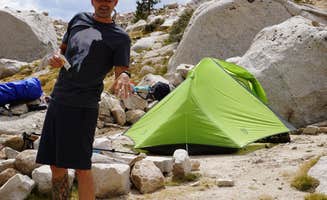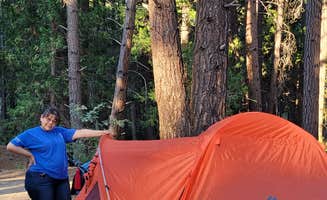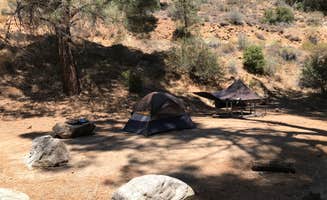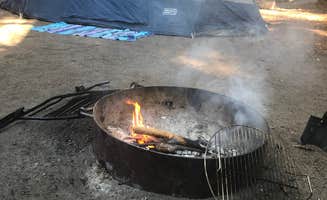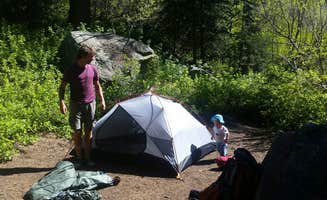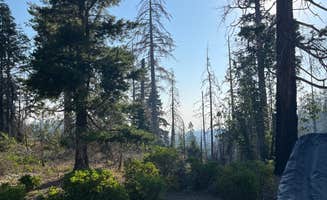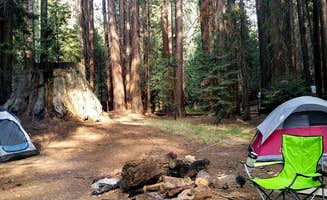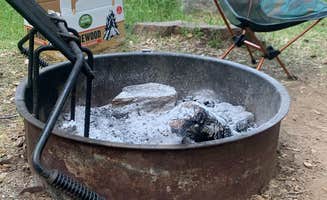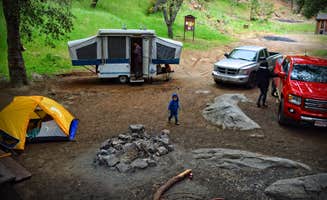Eastern Sierra camping areas near Olancha, California feature high-altitude sites ranging from 8,000 to 11,000 feet elevation in alpine settings dominated by Jeffrey pines. Winter snowpack often persists until late spring, limiting access to many backcountry areas before June. Nighttime temperatures drop significantly even in summer months, with frost possible throughout the year at higher elevations.
What to do
Fishing alpine lakes: At Cottonwood Lakes Backcountry Campsite, campers can catch Golden Trout in Lakes #3 and #5. "My brother caught multiple Golden Trout while fishing at Lake #3 and #5," reports Les R., who noted the pristine high-elevation setting at 10,000+ feet.
Acclimation hikes: Short day hikes from Horseshoe Meadow Campground provide excellent elevation adaptation before attempting higher peaks. "Day hike to Chicken Spring Lake for an icy dip when temperatures climb," suggests Michael A., who recommends this as preparation for higher elevation journeys.
Wildlife observation: Early mornings offer opportunities to spot local wildlife around meadow areas. "Coyotes, fox, deer and if you hike high enough you might see some bighorn sheep," notes a camper at Horseshoe Meadow, adding that "marmots popping up from the rocks" are common throughout the area.
What campers like
Dispersed camping sites: Cottonwood Pass Walk in Campground offers well-spaced sites that provide privacy and natural settings. "The sites are all really nice, they've got their own firepits and bear boxes to store all your stuff," mentions Kristen C., who used the site as a base camp for longer backpacking trips.
Night sky viewing: The lack of light pollution creates exceptional stargazing conditions. "The night sky splashed with the Milky Way visible most nights," writes Michael A. about the views from Horseshoe Meadow, highlighting the astronomical visibility in this remote area.
Accessibility to trails: Cold Springs Campground connects directly to numerous hiking routes. "Great access to many different hiking trails of varying difficulty," notes Jill F., who has been camping at the site for over 20 years and values its trail connectivity.
What you should know
Bear management requirements: Bear canisters are mandatory for overnight backcountry camping. "You are required to use a bear canister for overnight camping. Your toiletries, wrappers, trash, and food must fit in there, so plan accordingly," advises Les R. from his experience at Lone Pine Lake.
Water sources: Most campgrounds shut off potable water by early September. "Unfortunately, the potable water spigots were already turned off. The national forest website said they are off in the winter, but I didn't expect that already in early September," reports Les R. about facilities at Cottonwood Lakes Trailhead.
Permit requirements: Wilderness permits are required for overnight backcountry trips and should be secured well in advance. "You will need to get an overnight permit for Mt Langley hike at recreation.gov in advance. We grabbed three a couple weeks before our planned date," explains a camper who backpacked to Cottonwood Lakes.
Tips for camping with families
Best family-friendly sites: Limestone Campground offers spacious sites with amenities that work well for children. "Beautiful campground for $24/night... Sites are pretty nicely spaced out and almost all sites have shade," reports Les R., noting the availability of both trash and recycling facilities.
Wildlife safety education: Teach children about proper food storage and wildlife interaction. "Keep food packed and ice chests put in vehicle," advises Curtis L. at Limestone Campground, where bears are known to visit at night.
Low-intensity acclimation: Help kids adjust to altitude with gentle activities before attempting longer hikes. "I've used this spot for more 2-5 day jaunts than I can remember. My kids have been treated to this place for weekends off the grid since they've been toddlers," shares Michael A. about Cottonwood Lakes Trailhead, highlighting its family-friendly accessibility.
Tips from RVers
Elevation considerations: RV brakes should be in excellent condition for the steep, winding mountain roads leading to campsites. "The crazy drive up isn't worth it! It's a long and windy dirt road, with steep drop offs," cautions Kathleen L. about the route to Cold Springs Campground.
Site selection: RVers should research specific campground layouts before arrival. "Great for tent camping, but no pull-in or flat spots if you're sleeping in your vehicle. I slept in the equestrian campground since those were back-in sites," advises Kristian W. about camping at Horseshoe Meadow.
Weather preparation: Even summer nights can drop to near-freezing at higher elevations, requiring adequate heating systems. Jill F. notes that at Cold Springs Campground, "the water is COLD, even in summer," indicating the generally cool conditions campers should prepare for.


